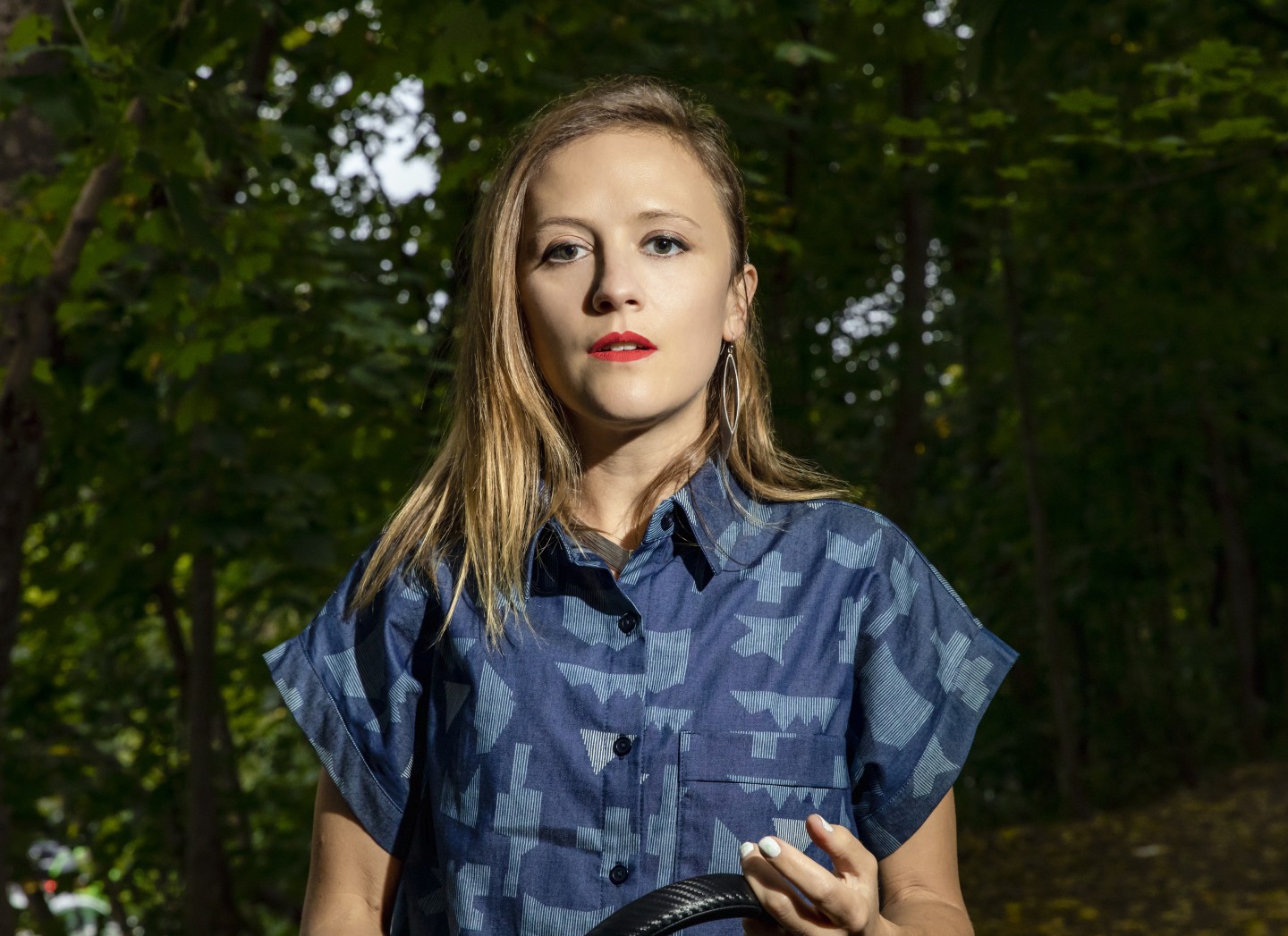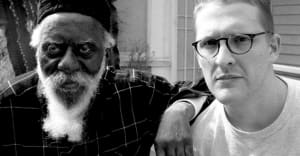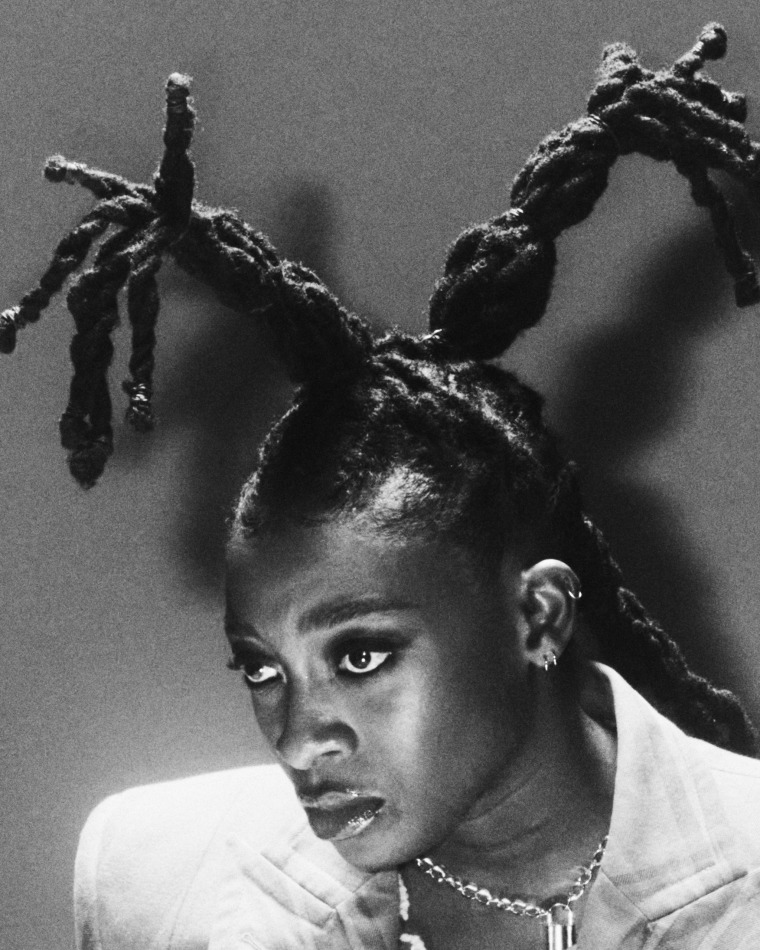Big Majestic”>
Erin Baiano
/
Press
The Gates began to take root in the frost-bitten New York City ground in mid-February, 2004. Over the next year, 600 workers installed of 7,503 bright orange steel structures, with saffron-colored fabric panels rolled up and affixed to the crossbars, across 23 miles of Central Park walkways. On February 13, 2005, workers unfurled the 1,000,000 square feet of cloth, one piece at a time. Christo and Jeanne-Claude, the artists behind the project, had completely transformed Central Park.
The composer and sound artist Ellen Reid was one of the millions of people who saw it in person. “I remember the day that I went to experience it,” she says now on a call from her studio in New York. “It had snowed, and so there was the white against the orange of the installation. It was just beautiful. The scale of it felt inspiring to me.” She still has a piece of the fabric that one of her friends, who’d worked as a volunteer on the project, handed her later that month after The Gates was disassembled and Central Park returned to normal. It’s within arm’s reach when we talk, and she’s delighted to show it to me.
For the past half-decade, Reid has been building, deploying, and adapting the musical equivalent of The Gates. The idea first came about in 2019, shortly after Reid won the Pulitzer Prize for Music for her opera p r i s m, which confronted the aftershocks of sexual and emotional abuse. SOUNDWALK was something else entirely. “We had a plan to make this public art project that was going to be in parks around the world, that followed the listener as they moved through the park, kind of like a film score does, and that uses a geolocated app,” she says. And though contained within an app, SOUNDWALK was immense in its scale and complexity. “The exciting challenge of the original composition was that listeners could experience it in like a million different ways: enter a park from any entrance, sit on a bench for 20 minutes, run through the park, take this path or that path,” she says. “There had to be a complete experience for all of those different ways of experiencing the music, and also it had to work time-wise.”
Reid’s process was exhaustive and exhausting. She wrote and recorded the music in “cells,” instrumental phrases and riffs that could last a few seconds or whole minutes. Listeners using the SOUNDWALK app would move into different zones that triggered the start of a new cell, while the last one was still playing. “Sometimes on one cell you’ll have chords and on another cell you’ll have a melody so that the chords are reframing the melody infinitely throughout time,” Reid says. “After a long time, they kind of sync back, and then you throw another layer on top with a counter-melody or another texture that adds another element of time.” No two people who used SOUNDWALK had the same experience. Reid refers to the project as a “mindfuck,” and that seems like an understatement.
Composition should have taken Reid about six months, but the first wave of COVID-19 lockdowns in March 2020 further complicated the process. This was, accidentally, the perfect pandemic art project, something that could bring to life public space but be enjoyed alone, outdoors, in open air. Reid realized that, in this new context, SOUNDWALK could take on “a different kind of significance.” Six months of work had to be condensed into six weeks. But the urgency was worthwhile, and after premiering in Central Park that September, SOUNDWALK spread across the world. Reid has composed site-specific versions of the project for public spaces around the world, including Griffith Park in Los Angeles, Primrose Hill and Regent’s Park in London, Ueno Park in Tokyo, Golden Gate Park in San Francisco, and Fairmount Park in Philadelphia. Each has its own sounds and textures, its own relationship with its surroundings.
The music that Reid composed for the project had its own, distinct beauty though, and Big Majestic, released last month, brings the SOUNDWALK project to a more conventional album. The scale and grandeur of the original project aren’t lost. From the utopian-sounding horns, synths, flutes, and strings that open the title track and return on “Sunrise in Central Park,” through the more heady collaborations with British jazz saxophone luminary Shabaka Hutchings, and the almost imposingly slow-moving tracks with San Francisco-based Kronos Quartet, Big Majestic has its own distinct sense of wonder.
Translating SOUNDWALK, what Reid refers to as “endless music,” into something more “finite” was, she says, an immense challenge. “We have all these different tracks of cells that are going at different times. How are they going to sync up to tell this one story of this one epic SOUNDWALK that Big Majestic is? The whole thing is one composition with elements that echo between the different songs and themes that come back and forth. I had to remove the looping of the different cells and make it more fixed, sometimes cutting minutes of music to make it all flow together.” She created her own narrative arc for the record — quite literally. She imagines Big Majestic as a mountain, with the first half of the album an ascent and the second half a return. There are themes and riffs from London, Los Angeles, Tokyo, New York and beyond, and Big Majestic is a walk through all of them and none of them at once. “It’s kind of this parallel thing where I’m going up this imaginary mountain and also, in my mind’s eye, at Captain’s Roost in Griffith Park, in Primrose Hill in London, and in Ueno Park in Tokyo,” Reid says. “It’s this dual journey.”
The synthesizer is an ever-present on Big Majestic, and Reid sees it as a sort of connective tissue, holding together disparate cells. She played the synth herself here, the first time she’s performed in a long time. “It’s really a different thing,” she says. “You’re feeling time in a different way. When you’re playing the music, you’re making the time, creating the time, stretching it, interpreting it. You’re living in the time of the music.”
Performing also allowed Reid to affect the recording in ways she might not have imagined at first, and the collaborations on Big Majestic bear that out. Kronos Quartet had been involved in the second SOUNDWALK, in Griffith Park, and Reid had composed a score for them to play. She felt it was important for them to understand what listeners would be experiencing when they heard the music: the view from the summit of the park, at the end of a long walk, towering over Los Angeles. It was still a score to be performed, though. With Hutchings, things were more freeform. They met in the studio, Reid with her synth and Hutchings with “this whole table full of different woodwind instruments.” They made “Primrose Hill” and “Spiritual Sun” there together. “I came with a picture that William Blake had drawn, this quote from William Blake, and some imagery of the top of Primrose Hill, just to kind of sync us up into what we’re thinking about while we’re making the music.” Reid rustles through some papers on the desk behind her to find the image she and Hutchings used as inspiration; it’s Albion Rose, a naked figure, arms outstretched, in front of an exploding sun. “Basically, like, you’re God, and God is bursting from your heart. Now let’s go.”
Reid laughs, but she’s not entirely joking. “I think on some level that is in the music,” she says, and that’s what’s so amazing about music — you’re conjuring these things that people somehow get without using any words.”
On Big Majestic, that means conjuring natural public spaces, something that Reid, raised in “lush and mountainous” East Tennessee, relies on consciously. Like Christo and Jeanne-Claude before her, it’s about the interplay of steel and grass, fabric and frost, concrete and calmness. “If I ever choose where I’m living, the question is, where’s the closest park?” she says. “In cities, that friction between the city and the energy of the city and the peace you find in the park — I just find that an eruption of creativity.”





